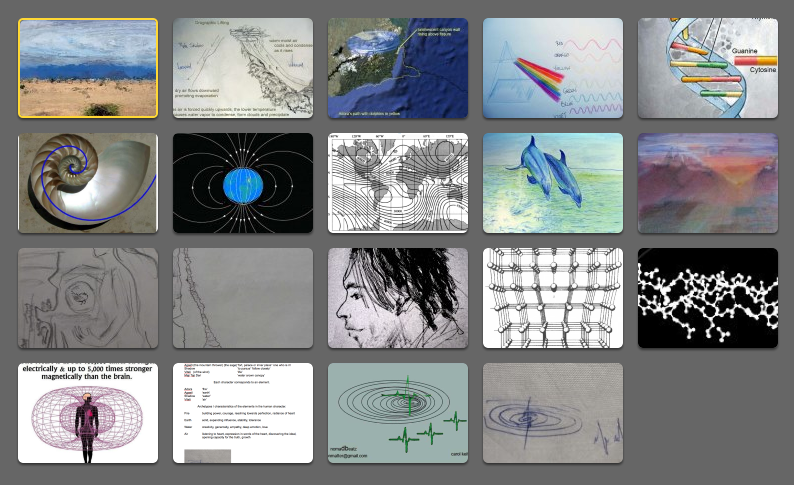All Life Has Consciousness | Carl Safina | Are Humans Capable of Letting Other Life Continue?
January 21, 2018 Leave a comment
I am very grateful to have discovered Carl Safina’s work and this TED talk just a day previous to posting this. Tears ran down my cheeks as I watched and listened to this scientist’s portrayal of animals, and of humans. Tears continued to stream from my eyes after I listened to his last words. I am so disappointed and basically frustrated with what humans deem as important.
I was about to write a blog about Borders? Why are Human Beings ‘Not Allowed’ to Walk Around on the Earth? However, to me, putting this concept out there of recognizing the importance of all other life forms besides humans, is far more important than the absurd political scenarios that humans impose on one another. What we are doing to the natural world and to other life forms, with our over-population, degradation of the environment, human-induced global warming and inciting a mass extinction, to me, far outweighs any of the absurd things that humans are doing to each other. Carl Safina does not by any means bypass this subject in his talk. He says, what humans do to other empathetic creatures is also what they do to one another.
I felt an urgent need to immediately post this to both blogs. I feel very sorry for those humans who do not feel compassion and awe with nature and all of life. I thank my parents that nature and an appreciation for all life forms was revered. I grew up with National Geographic and Smithsonian magazines in the home, and was curated to think way beyond my immediate vicinity.
I recently lauded friends who regularly inform and urge people to think about the protection of animals and wilderness. I mention this in association with a concept that is part of a new mode of thinking, systems thinking, seeing all life forms as interrelated. Human beings should prioritize protecting all other life forms, rather than destroying them and wiping out their habitats without any consideration whatsoever. The various bloody traditions of various cultures that consider it ‘sport’ to kill wolves, whales, bulls is disgraceful. The massive consumption of cows, pigs, chickens and use of land to feed these animals needs to be stopped. Wiping out wild horses and donkeys and other creatures because some believe that by eating particular speciality foods that they somehow will maintain their health or erections, also are dramatically mis-informed. Creatures penned in horrible conditions, blood baths and slaughters because of tradition, must all be reconsidered. People need to be educated. It begins with all of us communicating to one another.
The concept of actually recognizing that we share the same genetics and similar brains and spinal cords with other creatures perhaps will bring about a different sense of empathy.
It is the Buddhist monk Thich Nhat Hanh who introduces the concept of inter-being; all life is intricately related.
With a PhD in ecology, conservationist and writer Carl Safina has written several books and papers and has studied various species in their habitat. He was invited by Greenpeace to witness the changing climate in the Arctic and the impacts of industrial fishing on the marine environment.
In his TED talk Safina asks:
“What’s going on inside the brains of animals? Can we know what, or if, they’re thinking and feeling? Carl Safina thinks we can. Using discoveries and anecdotes that span ecology, biology and behavioral science, he weaves together stories of whales, wolves, elephants and albatrosses to argue that just as we think, feel, use tools and express emotions, so too do the other creatures – and minds – that share the Earth with us.”
Of the 22 species of albatross recognized by the IUCN, all are listed as at some level of concern; 3 species are Critically Endangered, 5 species are Endangered, 7 species are Near Threatened, and 7 species are Vulnerable.
Since humans tend to adorn the rooms of their new born babies with images of the other creatures with which we share our planet, in which every animal of Noah’s Ark is now in mortal danger, instead of asking the question Do animals love us?, We need to ask, Are human beings capable of letting other life continue?
Carl Safina states, “From all I’ve seen, my main conclusion is that at this point in history, nature and human dignity require each other. Where wild places are destroyed, wild animals lost, and the world degraded and polluted, not only is that itself a great loss for the world, but for people in degraded places it becomes almost impossible to maintain a dignified existence.”
This article in the USA Today describes that global warming continues, with each year breaking record temperatures of the previous.”NOAA’s analysis does not include data from the Arctic, while NASA’s does, NOAA climate scientist Deke Arndt said. The Arctic has been warming faster than any part of the world.”
“This announcement should shock no one,” said Lou Leonard of the World Wildlife Fund. “The key question is what we do about it. With the costs of inaction piling up, Washington, D.C., is largely looking the other way. So it is up to a new class of leaders from American businesses, universities, cities and states to pick up the slack.”

Carol Keiter aka nomadbeatz welcomes donations for her writing, photography, illustrations, eBook & music composition














